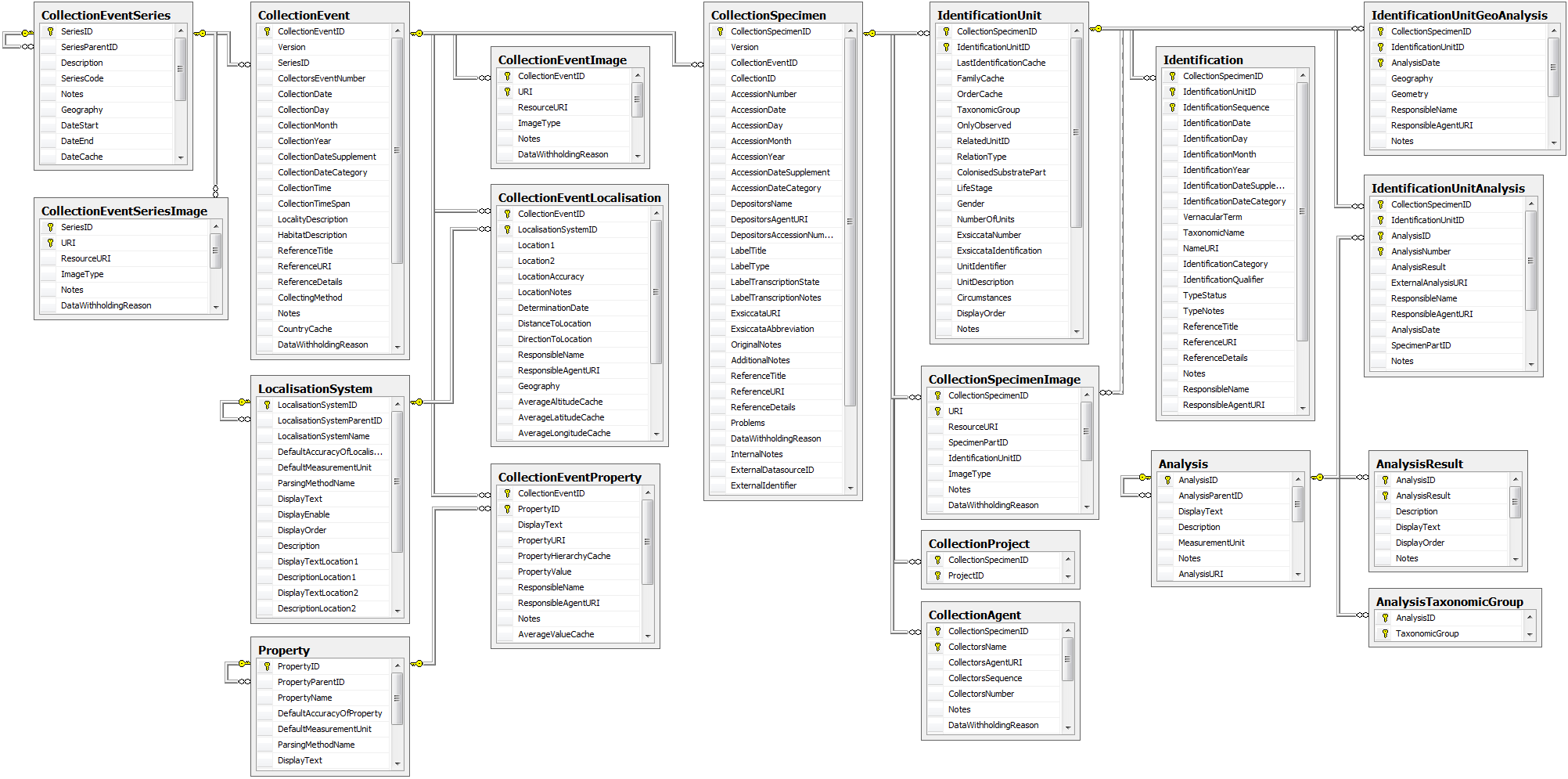MobileModel v1.0
DiversityMobile Information Model (version 1.0, 10 August 2010)
By T. Schneider, M. Weiss, & D. Triebel 2010
Note: The models currently reside in MS SQL Server Compact, so knowledge of some SQL Server ER-diagram conventions will be helpful.
Besides the screen shots below, a Microsoft T-SQL-Script for the generation of the tables is provided.
Proposed citation:
T. Schneider, M. Weiss, & D. Triebel (2010). DiversityMobile information model (version 1.0). http://www.diversityworkbench.net/Portal/MobileModel_v1.0
ER Diagrams
Overview over all entities and relations used in the database model
Some “housekeeping” fields and tables for the documentation when and by whom the data were inserted or changed are not shown in the overview or the detail diagrams.
A short introduction:
- “CollectionSpecimen” is the central entity, containing the information directly related to the collected specimen. The field ExsiccataID relates to the module DiversityExsiccate within the Diversity Workbench.
- “CollectionProject” keeps the relation to the projects. Each specimen may be included in several projects.
- “CollectionAgent”. The people or groups responsible for the collection of the specimen are stored in the table CollectionAgent. There may be several collectors for one specimen. The sequence of the collectors (e.g. for print on a label) is stored with the CollectorsSequence. The CollectorsAgentURI refers to the module DiversityAgent within the Diversity Workbench.
- “CollectionSpecimenImage” keeps the images for a specimen. The ResourceURI refers to the module DiversityResources within the Diversity Workbench.
- “CollectionEvent” is the central entity, containing the information for the collection event. Specimen stored in a collection are gathered during a collection event. The tables associated with collection event keep informations about the geographic locality, the habitat, the date etc. During an collection event, several specimen may have been collected.
- “CollectionEventSeries”. An event series can contain other series and collection events. The event series should be used to organise your collection events.
- “CollectionLocalisation”. The geographic localisation of each collection event can be documented with several localisation systems. One option are entries linked to the module DiversityGazetteer within the Diversity Workbench, providing information on geographical names.
- “LocalisationSystem” lists the localisation systems used to document a geographical locality.
- “CollectionEventProperty”. Properties of the collection site, e.g. the habitat found during a collectoin event can be documented with several habitats derived from standard habitat list like e.g. EUNIS.
- “CollectionEventImage” keeps the images related to a collection event, e.g. a map or a photograph of the habitat.
- “IdentificationUnit”. The items in one collection specimen are regarded as identification units. One specimen can contain several identification units, e.g. an insect (1) feeding on a fungus (2) growing as a parasit on a plant (3).
- “Identification” keeps the identifications of the identification units in a collection specimen. Each identification unit may have been identified several times. For relation to the module DiversityTaxonNames the field NameURI is used.
